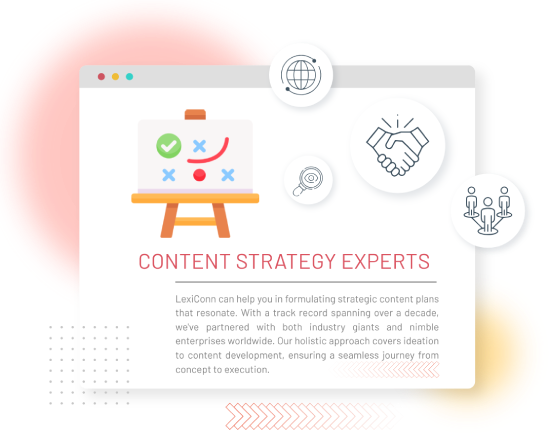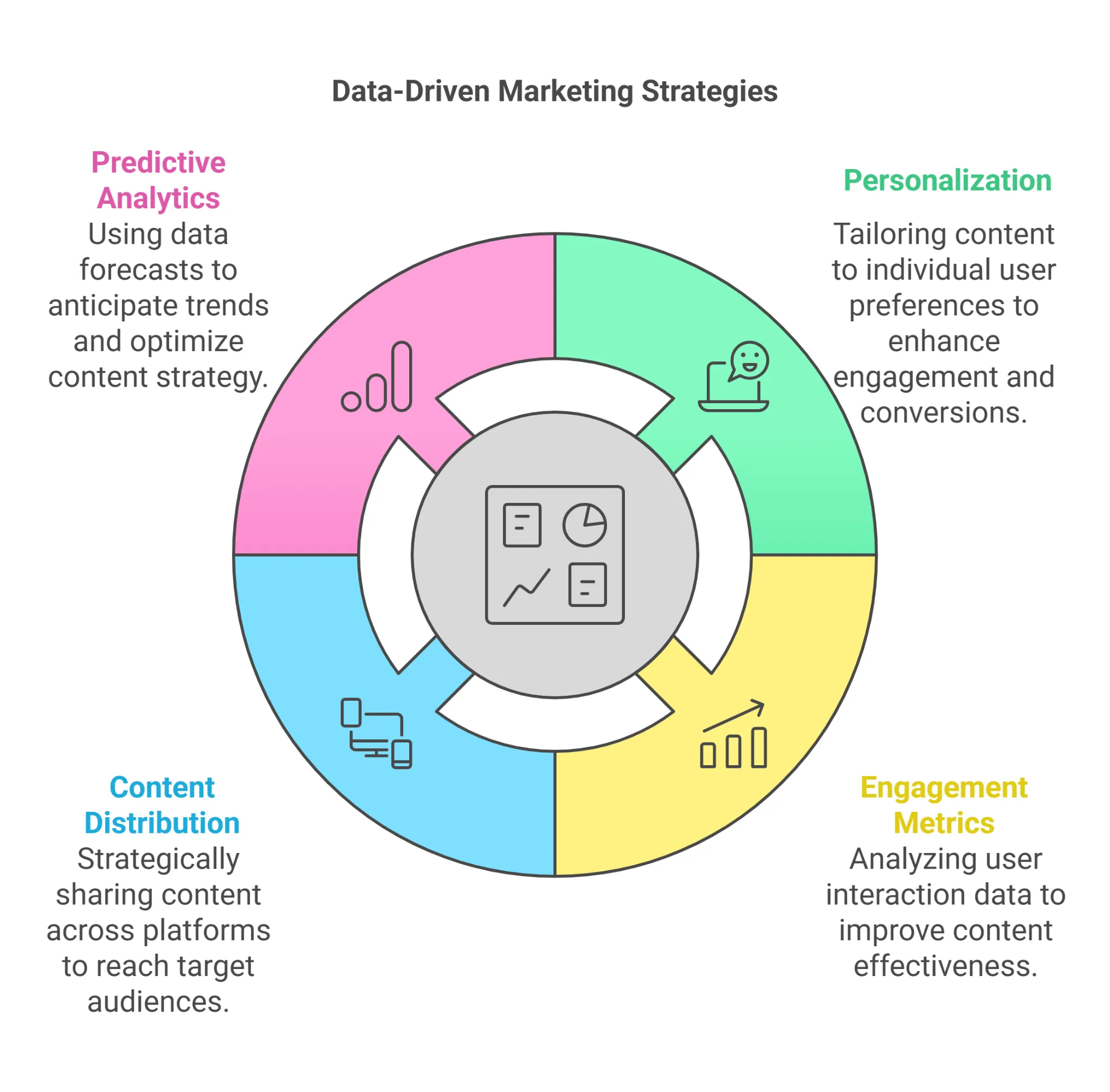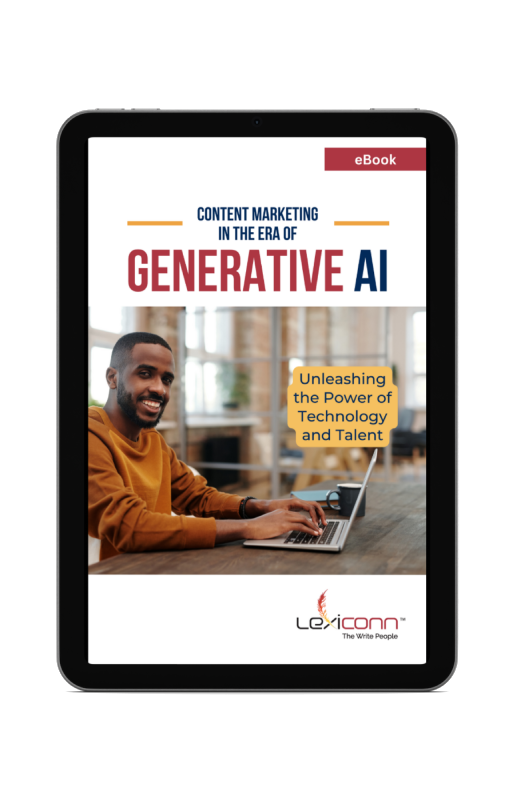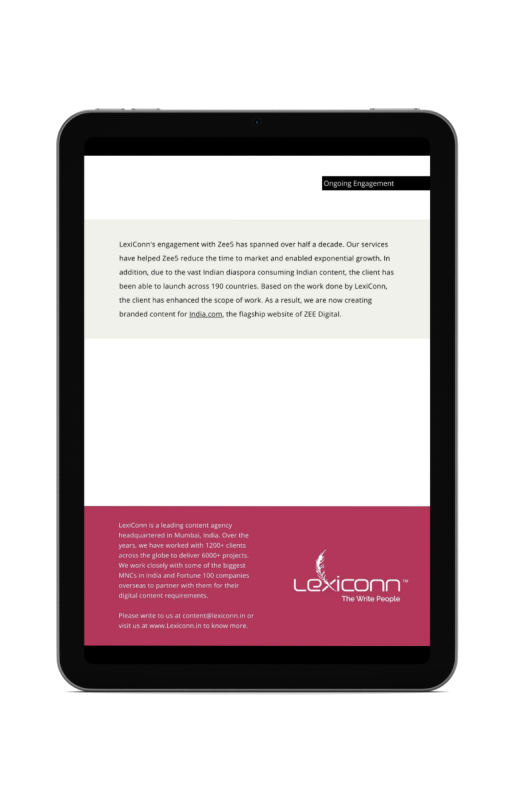

(Source)
(Alt-text: How data analytics improve content strategy)
Companies aim to rank at the top for their target keywords. According to FirstPage, securing the top Search Engine Results Page (SERP) position in your niche can generate a 39.8% click-through rate (CTR). This represents a significant traffic share, especially compared to the second and third positions, which receive 18.7% and 10.2% CTR, respectively.
Many businesses focus on traffic generation but fail to convert visitors into customers. The real challenge is creating content that converts.
Businesses can transform generic SEO content into high-impact conversion content by leveraging customer behavior, keyword trends, engagement metrics, and performance analytics. But what does data-driven content look like in practice? How do businesses use data to refine their content strategy?
In this blog, we'll explore how data analytics can enhance content strategy for better engagement and lead generation, identify the best content formats for high conversions based on research, and discuss how businesses can integrate SEO content with data insights to boost conversion rates.
A data-driven approach improves content and ensures that every piece of content is a strategic business asset.
Many businesses assume that ranking high on Google automatically leads to conversions. While SEO content is critical for driving traffic, it’s only the first step in the conversion funnel. If visitors land on a page and don’t find content that resonates with them, they’ll leave—without taking action.
So, what is conversion content?
Conversion content is designed to turn visitors into leads or customers. It doesn’t just inform—it compels users to engage, sign up, or buy. This type of content uses:
✔ Persuasive storytelling to establish trust and credibility.
✔ Personalized messaging based on audience insights.
✔ Strategic formatting, such as clear CTAs and interactive elements.
Why SEO Content Alone Can’t Drive Conversions
SEO strategies help bring users to your website but don’t guarantee they’ll stay or convert. If your content is only optimized for search engines—not user intent—you’re missing out on potential customers.
For example, a business may target the keyword “best marketing strategies,” but if their content is:
Then, it won’t generate leads or sales, even if it ranks #1 on Google.
A data-driven content strategy helps businesses create high-impact SEO content by analyzing:
By using data-backed insights, businesses can fine-tune their messaging and improve conversion rates, ensuring that every piece of content serves a clear business goal.

Many businesses still rely on guesswork when crafting their content strategy. They write blogs, publish social media posts, and create landing pages without real data to back their choices. But in today’s competitive landscape, that approach no longer works.
Let’s explain how businesses can use SEO content, analytics, and audience insights to create content that ranks and converts.
Understanding who your audience is and what they need is the foundation of conversion content. Businesses that rely on audience analytics can create highly relevant content that speaks directly to user intent.
Here’s how data helps improve audience targeting:
A data-driven strategy allows businesses to go beyond generic SEO content and tailor messaging based on user behavior.
SEO isn’t just about ranking for high-volume keywords—it’s about ranking for the right keywords that align with buyer intent.
A data-driven keyword strategy includes:
✔ Understanding intent – Is the user looking for information, comparing products, or ready to purchase?
✔ Prioritizing high-converting keywords – Focusing on terms that drive action (e.g., “best CRM software for small businesses” instead of just “CRM software”).
✔ Competitor gap analysis – Identifying keywords that competitors rank for but your business hasn’t targeted yet.
Tools like Google Search Console, Ahrefs, and SEMrush help businesses refine their SEO content strategy to attract the right audience and improve conversions.
Not all content types generate the same results. Businesses must focus on formats that drive engagement and encourage users to take action.
According to a Content Marketing Institute, interactive content generates 52.6% more engagement than static content.
Here are some of the best content formats for high conversions:
When content is strategically structured, businesses educate their audience and convert them into customers.
Even the best content strategy needs continuous optimization. A/B testing helps businesses fine-tune their approach by comparing different versions of content to see what works best.
Key areas for A/B testing in conversion content:
By tracking click-through rates, bounce rates, and time-on-page, businesses can make data-backed decisions to improve content performance.
|
Read: The Complete Guide to Conducting a Technical SEO Audit |

Creating content is only half the battle—ensuring it performs well and drives conversions is where data-driven marketing makes the biggest impact. Businesses that rely on real-time data, analytics, and AI insights can refine their content strategies, improve engagement, and maximize ROI.
Personalized content drives stronger engagement and higher conversions because it speaks directly to the audience’s needs, preferences, and behaviors. When businesses use data-driven marketing to tailor their content, they see increased interaction, better retention, and improved lead generation.
Amazon, Netflix, and Spotify use predictive algorithms to recommend products, movies, and music based on user behavior. This AI-powered personalization increases:
✔ Customer retention (users keep coming back).
✔ Click-through rates (higher engagement with recommended content).
✔ Conversion rates (personalized content leads to higher sales).
Implementing behavior-based content recommendations can significantly improve conversion rates and customer satisfaction for businesses.
Tracking engagement metrics is crucial for understanding how users interact with content. Businesses that analyze page views, scroll depth, bounce rates, and time on the page can identify what’s working—and what’s not.
✔ Repurpose high-performing content into multiple formats (blogs, videos, infographics).
✔ Improve CTAs and internal linking to encourage deeper website navigation.
✔ Update outdated articles with fresh data and examples to maintain relevance.
Even the best content won’t perform well if it isn’t distributed effectively. A data-driven marketing strategy ensures that content reaches the right audience on the right platform at the right time.
✔ Use Google Analytics to track referral traffic and optimize distribution channels.
✔ Leverage AI tools like ChatGPT for automated content repurposing across multiple platforms.
✔ Implement A/B testing to refine content formats for different audience segments.
Businesses that align their content distribution strategy with data insights experience higher engagement, better conversion rates, and more efficient marketing spending.
Predictive analytics helps businesses anticipate trends, optimize content calendars, and stay ahead of competitors. AI-driven insights allow companies to create content before demand peaks, giving them a strategic advantage.
✔ Analyze past performance data to predict future content success.
✔ Use machine learning algorithms to identify keyword trends before they peak.
✔ Implement dynamic content updates to keep blogs and landing pages relevant over time.
Creating content without data-driven insights is like navigating without a map. Businesses that rely on intuition alone struggle to generate leads, retain audiences, and improve conversions. At LexiConn, we help businesses bridge the gap between SEO content, conversion-focused strategy, and data-backed decision-making.
With our expertise in conversion content and data-driven marketing, we help brands turn content into a revenue-generating asset. Whether you’re looking to optimize existing content, create high-converting landing pages, or develop a long-term content strategy, we provide the solutions you need.
Businesses that fail to leverage data-driven content strategies risk falling behind competitors. With AI, automation, and real-time analytics shaping the future of digital marketing, brands that embrace conversion content and predictive analytics will thrive.
Are you ready to transform your content into a revenue-driving powerhouse?
At LexiConn, we help businesses transition from traffic-focused content strategies to high-converting, data-backed content marketing. Book aFREE 30-minute content audit consultation today! Visitwww.lexiconn.in or email [email protected].



I have read and accept the Privacy Policy
Read More